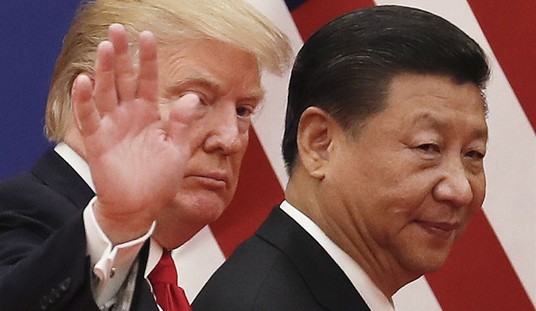It’s almost impossible to overstate the importance of chipmaking to America’s national security.
From computer networks to networked jet fighters to missile defense, everything we rely on to deter or win wars with near-peer opponents like China runs on silicon.
For decades, America had Intel producing the world’s fastest computer chips, giving us a leg up on our rivals.
NOTE: Intel achieved dominance in two ways. One was by using some shady business practices, but we won’t get into those in this article. They aren’t germane and, more importantly, they distract from the point that Intel still (almost always) made the fastest CPUs.
But now they don’t, and there’s no telling if the Santa Clara-based giant can ever get its mojo back.
Intel was the company that lived by the motto “only the paranoid survive,” exploring and exploiting every technical and business challenge that came their way.
Even when rival American chipmaker AMD would sometimes come up with a better CPU, they couldn’t challenge Intel’s ability to maintain market share through sheer chipmaking prowess.
Intel’s secret sauce consisted of two ingredients.
The first was that they built shockingly expensive, bleeding-edge chipmaking fabs at a scale no one else could. The second ingredient was the “Wintel” duopoly they enjoyed with Microsoft Windows.
So long as 90% or more of the world’s personal computers ran Windows, Intel would generate the cash to keep building new and better fabs.
Both companies enjoyed being part of a positive feedback loop, where nobody could beat Windows computers on price, which meant that nobody could beat Intel at scale.
But most personal computers don’t run Windows anymore. Most personal computers are small enough to slip into your pants pockets and are mistakenly referred to as “phones.”
Most of those run Android, not Windows. Nearly all the rest run Apple’s iOS operating system.
Not a single one of them runs on Intel silicon.
When Apple approached Intel around 2006 to see if they’d be interested in producing CPUs for the still-top-secret iPhone, the once-paranoid company failed to recognize the danger inherent in a new computing platform.
Intel’s CEO at the time, Pat Otellini, later admitted that “the world would have been a lot different if we’d done it,” and made chips for the iPhone.
But the phone market, Otellini figured, was too small to generate the kind of profits Intel was interested in.
In 2019, the global market for Windows PCs was about 267 million sold. Intel produced the lion’s share of CPUs powering those machines.
That same year, end-users bought an incredible 1.5 billion smartphones. Every single smartphone runs on an ARM-based chip, and Intel made exactly zero of them.
What that means is, companies other than Intel — largely Taiwan Semiconductor and Samsung — have had a lot more money to invest in bleeding-edge fabs.
The results are telling.
Advanced fabs produce chips with smaller (and more) circuits jammed into the same amount of space, using ever-more exotic technologies like Deep Ultraviolet (DUV) lithography or the even-smaller Extreme Ultraviolet.
Two years ago, Taiwan Semi (TSMC) was producing chips at the 7-nanometer scale in volume to power Apple’s iPhone 11. Last year, they started mass-producing at the 5mn scale for the iPhone 12 and Macs running on Apple’s custom M1 CPUs.
This year, Apple’s A-series and M-series chips are widely expected to run on 3nm chips, again produced by TSMC. Samsung and Android phones are all on a similar path as Apple.
Worse, Apple’s M-series chips pose an indirect threat to Intel’s cash cow, their high-profit-margin server CPUs. ARM-based chips like Apple’s have serious performance and energy-savings advantages over CPUs using Intel’s legacy 486 instruction set. While Apple will likely never build ARM servers to challenge Intel, other companies will.
Just this week, Nvidia announced a radically good ARM-based data-center CPU, and others will follow. Nvidia — just like AMD and Apple — merely designs the chips. TSMC actually fabs them.
In years past, this is when Intel would use its fab muscle to maintain dominance, but its muscle has gone flabby because the TSMC/smartphones combo enjoys the same kind of positive feedback loop Wintel once had.
As a result of this and their own ineptitude, Intel has been stuck for the last few years producing slightly improved variations on their 14nm and (at a lower scale) the 10nm fabrication process.
I read in 2018 that Intel has been basically “stuck on 14nm since the launch of Broadwell way back in 2014,” and only this year are they expected to produce 10nm at scale.
Process scales differ slightly between Intel and TSMC, so depending on how you measure it, Intel is two, maybe three chip generations behind TSMC.
This is where I must remind you that TSMC is HQ’d on an island nation still claimed and coveted by Communist China.
See the problem? The best chips no longer come from Intel; they come from a company whose home is targeted by thousands of China’s missiles.
Communist China has its own problems, thoroughly detailed last week by Lawrence Person.
The short version is that mainland China’s chip industry is years and years behind America’s and Taiwan’s — and that the CCP and CCP-influenced businesses there are using smoke and mirrors to make the situation look much better than it actually is.
Commies lie about everything, dontcha know.
ASIDE: If Japan would attack America at Pearl Harbor as part of a gambit to secure oil resources in the East Indies, why wouldn’t China attack Taiwan in an effort to secure chipmaking technology? This thought sometimes keeps me up at night.
There is hope.
Intel has a new CEO, prodigal son Pat Gelsinger. Longtime industry executive and investor Jean-Louis Gassée reported in his must-read Monday Note that Gelsinger “possesses a wide range of unusual skills grounded in a strong cultural background.”
As Gassée puts it, “Gelsinger isn’t returning to his employer of 30 years to fine-tune a few processes or organizations, he says he wants to lead a real Intel 2.0 revolution.”
Intel needs it.
So do we.










